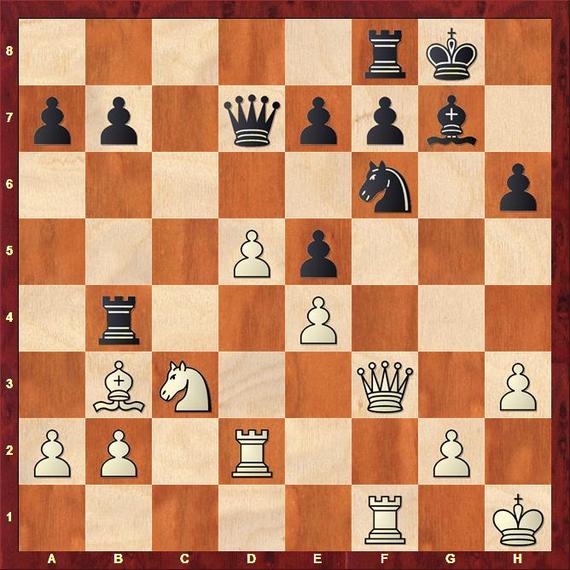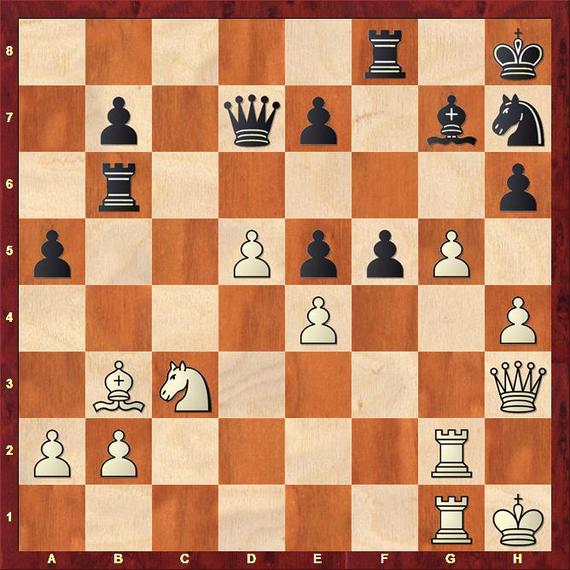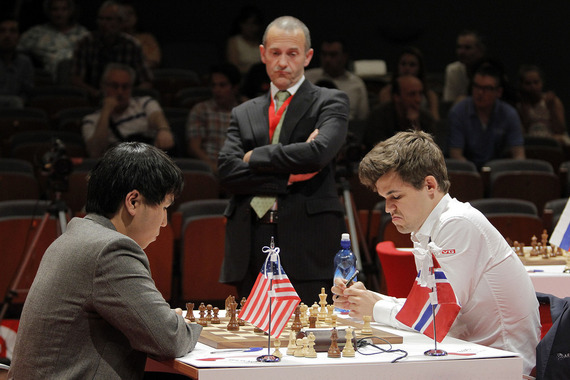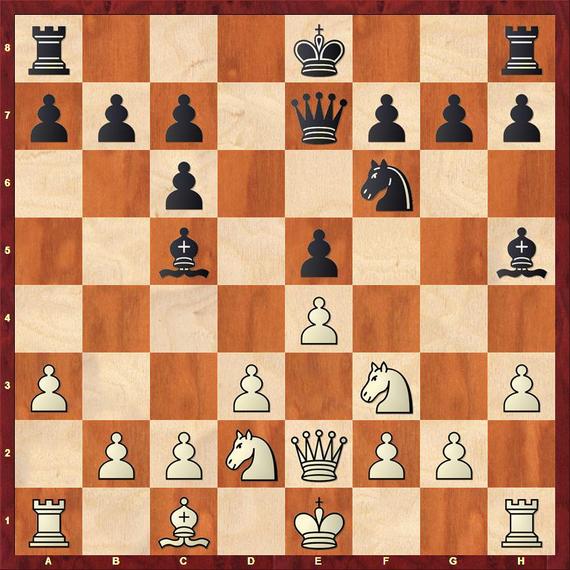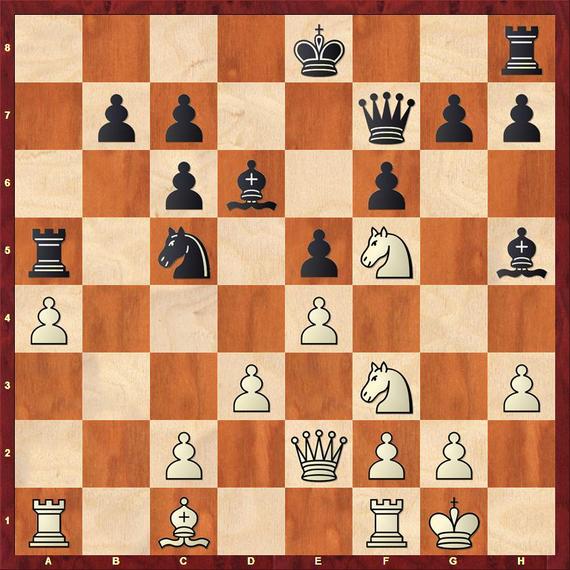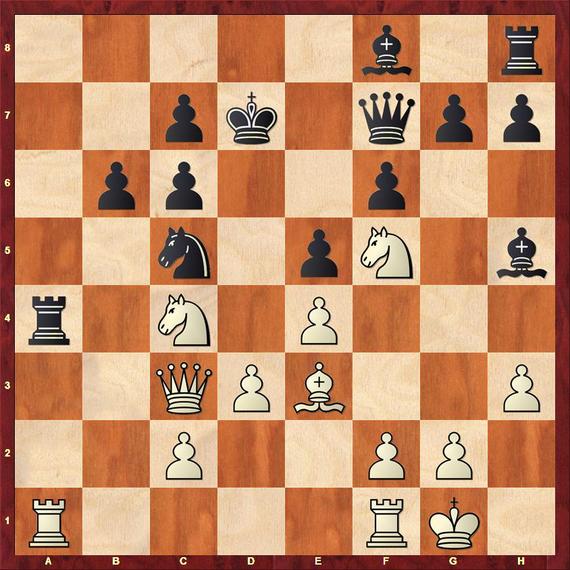Txapeldun, a traditional Basque beret honoring brave champions, was bestowed on Magnus Carlsen on Saturday. The world chess champion won the 2016 Bilbao Masters with a dominant performance. He clinched the event twice before after sharing first place and triumphing in the playoff - in 2011 against Vasyl Ivanchuk and in 2012 against Fabiano Caruana. This year was different. Carlsen turned the other world-class players into spectators.
Carlsen won four games, one more than all his opponents combined. He started slowly. For the first time he lost to Hikaru Nakamura in a tournament with the classical time limit. He wowed to play sharper and with a string of three victories catapulted himself into the lead and never relinquished it. His last victory came against Anish Giri, whom he has never beaten in the classical tournaments before.
Bilbao has been encouraging players to fight and to win games for years by using the soccer point system, with three points for a win and one point for a draw. It didn't quite work this year, with only 23 percent of decisive games. Carlsen was the major benefactor, securing the tournament victory with one round to go.
The Bilbao Masters offered a two-game preview of the world championship match between Carlsen and Karjakin, scheduled for November. It didn't look good for the Russian challenger. Carlsen took care of the first game. He was increasing his advantage slowly and meticulously, turning it eventually into an unstoppable mating attack.
Carlsen,Magnus - Karjakin,Sergey
Bilbao Masters 2016
The protection of the black king is weakened by the missing g-pawn and Carlsen launches a kingside attack.
31.g4!? a5 32.Rg2 Nh7
The strength of White's attack is demonstrated by this variation: 32...a4 33.g5! hxg5 34.Rxg5!! Ne8 35.Rfg1! f6 (35...axb3 36.Qg3+-) 36.Rg6! axb3 37.Qh5 e6 38.Rh6 and White mates.
33.h4 Rb6
Karjakin rushes his rook back to help the king.
34.g5!
The offensive begins and Karjakin has to decide how to set-up his defense.
34...Kh8
After 34...Rg6 35.Rfg1 the pressure is mounting, but it was the best choice. Exchanging the g-pawns gives White the h-file for the onslaught. One possible line is 34...hxg5 35.hxg5 Rg6 36.Qh5 Qd6 37.Rfg1 Rd8 38.Rh2 Nf8 39.Rf1 threatening 40.Qf3.
35.Rfg1 f5?
Karjakin was probably fed up with a passive defense, but his last move makes Carlsen's task easier. But 35...Rg6 36.Ba4 (36.gxh6 Bxh6=) 36...Qc8 37.Rh2 still leaves White in command.
36.Qh3!
An unpleasant pin that allows White the final attack along the g-file.
36...Rb4?
Nothing helps, for example: 36...Rd6 37.gxh6 Bxh6 38.Qg3 Nf6 39.Qxe5+-; or 36...hxg5 37.hxg5 Rg6 38.Rh2+-. But leaving the sixth rank speeds up the defeat.
37.gxh6! Bxh6 38.Qg3!
A nasty double-attack, threatening 39.Qg8+! and 39.Qxe5. White also wins after 38.Rg6 Bf4 39.Qg2 Nf6 40.d6 Ng4 (40...Rxb3 41.axb3 Qxd6 42.Nd5+-) 41.exf5+-.
38...Nf6 39.Qg6! Ng4 40.Rxg4 Black resigned.
White wins after 40...fxg4 41.Qxh6+ Kg8 42.Qg6+ Kh8 43.Qh5+ Kg7 44.Rxg4+.
Carlsen's victory against the last year winner Wesley So was impressive. The Norwegian grandmaster reached for an opening idea used two centuries ago. He created an elusive target and when Wesley took aim, the white knights began to leap all over the board. A timely pawn sacrifice left the black king vulnerable to a final storm.
Carlsen,Magnus - So,Wesley
Bilbao Masters, 2016
1.e4 e5 2.Nf3 Nc6 3.Bb5 Nf6 4.d3 Bc5 5.Bxc6
Adolf Anderssen, the attacking master and one of the world's best players of the 19th century, was experimenting with this unprovoked exchange in the Spanish. Black will most likely lose a tempo since the bishop on c5 is not ideally placed. White bets on his better pawn structure.
5.Be3 is an idea from Giocco Piano, preferred by the Viennese master dr. Arthur Kaufmann around 1890s.
5...dxc6 6.Qe2
Threatening 7.Nxe5. Against Kramnik, last month in Paris, Magnus prevented the Bc8-g4 pin with 6.h3. Anderssen and later the Czech leading player Oldrich Duras used the move h2-h3 to launch a kingside attack with g2-g4.
6...Qe7
6...Bg4 can be met by 7.Nbd2 as in the game.
7.Nbd2
7.h3 was played already in the game Walbrodt-Metger, Berlin 1897.
7...Bg4 8.h3 Bh5 9.a3
White's last two moves, often humorously referred to as "donkey's ears," throw the theory out the window. It was never played before. The idea seems to be to place the bishop on the diagonal a1-h8 after the advance b2-b4, but it also forces Black to decide where he wants his king. White waits and his plans are flexible.
9...Nd7
The preventive 9...a5 makes the long castle for Black more difficult.
10.b4 Bd6
10...Bd4 seems a waste of time after 11.Rb1 Bc3 12.Rb3;
The alternative was 10...Bb6 11.Nc4 a5 12.Rb1 axb4 13.axb4 f6=.
11.Nc4 f6 12.Ne3 a5!?
A sharp choice, attacking the only target. Black could have improved the position of his knight: 12...Nf8 13.Nf5 Qd7 14.Be3 Ne6.
13.Nf5 Qf8
The position is not easy to play for either side, but bouncing with the Queen hardly helps. 13...Qf7 would have saved time 14.bxa5 Rxa5 15.0-0 Ra4 (Not 15...0-0? 16.Bh6!).
14.bxa5 Rxa5 15.0-0 Qf7 16.a4 Nc5
Other lines give White the edge:
16...0-0 runs into 17.Bh6! again.
16...Bb4 17.Rb1 Rxa4 18.c3 Bc5 19.Rxb7 Bb6 20.Be3;
16...b5 17.Qe1 Rxa4 18.Rxa4 bxa4 19.Qa5.
17.Qe1!?
By attacking the rook, Carlsen gets out of the pin to bring his knight from f3 to the queenside. This plan is connected with a pawn sacrifice. A full board play 17.Bd2 Ra8 18.Rfb1 Qd7 19.g4 Bg6 20.d4 was another option.
17...b6 18.Nd2 Rxa4 19.Nc4 Bf8?!
Deciding to leave the king in the center. 19...Be7 is preferable, but after 20.Be3 Kd7 (20...Rxa1 21.Qxa1 0-0 22.Bh6!±) 21.Rxa4 Nxa4 22.f4 White has strong pressure.
20.Be3! Kd7
It is difficult to find a good plan, but burying the kingside is not helpful.
21.Qc3!
All the white pieces are in play and Carlsen threatens 22.Nxb6+! cxb6 23. Bxc5 Rxa1 24.Rxa1 Bxc5 25.Ra7+ skewering the queen.
21...Nxe4
Black cannnot find relief with the exchange sacrifice 21...Rxc4 22.dxc4 Nxe4 23.Qd3+ Nd6 24.g4 Bg6 25.Rfd1! c5 (25...Bxf5 26.gxf5 c5 27.Qb3+-) 26.Bxc5! bxc5 27.Ra7 and the white attack crashes through.
22.Nxb6+!
This zwischenzug opens up lines on the black king.
22...cxb6 23.dxe4
The black king is dangling hopelessly in the middle and Carlsen zeroes in.
23...Qc4 24.Qd2+ Kc7
White also wins after 24...Ke6 25.Rxa4 Qxa4 26.Qd8 Qxe4 27.Qc8+ Kf7 28.Ra1+-.
25.g4 Bg6 26.Rfd1 Black resigned.
After 26...Ba3 (26...Bxf5 27.Qd8+ Kb7 28.Qxb6++-) 27.Rxa3 Rxa3 28.Qd6+ White wins.
Note that in the replay windows below you can click either on the arrows under the diagram or on the notation to follow the game. Select games from the dropdown menu below the board.
Images by Bilbao Chess and Manu de Alba






